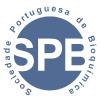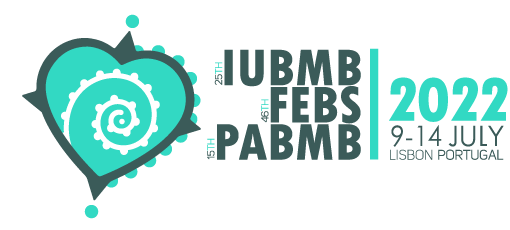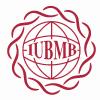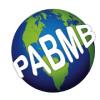
Late-breaking Abstracts
The Congress organizers are pleased to announce that Late-breaking Abstract Submission is now open and will run till May 25, 2022, to enable recent research findings to be included at the IUBMB–FEBS–PABMB Congress as poster presentations.
Late-breaking abstracts can be submitted for consideration via the website's registration and abstract submission system. Abstract topics can be seen here.
Important points for late-breaking abstracts
Research abstracts
- Abstracts must be submitted in English.
- Abstracts must report new or recent substantive scientific results in the molecular life sciences from the lab(s) of the author(s).
- At least some findings unpublished at the time of abstract submission should be included. Where previously published results are also presented as part of the main findings (rather than only for context), this should be work published no more than 18 months before the May 25, 2022 abstract submission deadline (i.e. November 25, 2020). Any prior publication should be cited in the abstract (see Step-by-Step Guide below).
- The presenting author of the abstract must complete registration by May 25, 2022 for abstracts to be assessed and included in the Congress Programme.
- Each registrant can submit only one research abstract to the IUBMB–FEBS–PABMB Congress, whether submitted in the late-breaking phase or the previous main abstract call.
- The same abstract cannot be submitted by different delegates.
Education abstracts
- Late-breaking abstracts are also invited on 'Molecular Life Sciences Education'. These should preferably report research findings on aspects of teaching/learning, but other original contributions to current topics in education and career development are also welcome.
- Each registrant can submit only one education abstract for evaluation, but may submit both a research and an education abstract from the same registration, regardless of the abstract call – e.g. a registrant who submitted only a research abstract in the main abstract call or who submits one in the late-breaking call can also submit an education abstract in the late-breaking abstract call without additional charge.
- Other general points stated for research abstracts also apply to education abstracts.
Evaluation and outcomes
- Late-breaking abstracts submitted to the Congress will be screened by the Session Chairs in consultation with the Local Organizing Committee for relevance to the Congress’ scientific content, and presentation. Abstracts not meeting the quality standards will not be accepted.
- Research outlined in a late-breaking abstract accepted to the IUBMB–FEBS–PABMB Congress will be presented (by the presenting author) as a poster.
- Late-breaking abstracts accepted to the IUBMB–FEBS–PABMB Congress will be presented on the Congress website shortly before and during the Congress, and on the Congress app (as for other abstracts at the event); however, late-breaking abstracts will not be included in the FEBS Open Bio supplement of Congress abstracts.
- To ensure assessment of a late-breaking abstract and inclusion in the Congress website abstract section and Congress app, submission of the abstract AND registration of the presenting author, with payment, must be complete by May 25, 2022. Confirmation of abstract acceptance for the Congress will be communicated by June 6, 2022.
Late-breaking Abstract Submission System Step-by-Step Guide:
- After logging in, select the 'Abstract' tab on the top menu of your participant account on the Congress website
- Abstract Track: Only invited speakers should select the Plenary Lecture, Symposia or Special Sessions tracks. All other submissions must be into the Late-breaking abstract tracks (‘Posters – Research’ and ‘Posters – Education’; please take care you select the right one).
- Abstract Topic: Please choose carefully the most relevant abstract topic from the drop-down menu.
- Title: Your abstract title should be short and informative, and must not exceed 200 characters. It must be written in ‘sentence case’ – capitalise only the first word and any words or abbreviations that must be capitalised, e.g. Revisiting the Staphylococcus aureus SarA regulon by high-throughput screening. Do not write your title in all capital letters.
- Authors and Institutions: These must be added into the special fields for this information, for the presenting author and each co-author – do not add any author details into the abstract body. Add authors by using the 'Add/Edit Author' button. The presenting author can be changed by clicking the ‘Edit Author’ button of the preferred author and by choosing ‘Yes’ for ‘Presenter’ field. The order of authors can also be changed by editing the ‘Numerical Order’ of an author. There is also an option to indicate an equal author contribution from particular authors, which will be shown by an asterisk on the author names. Author names will be automatically formatted in the following style: A. Smith, B. Jones, etc. The author's workplace address must be added for every author listed – use the Add/Edit Author's Workplace(s) button for this.
- Abstract Body: Your abstract body can have a maximum of 2000 characters (with formatting and spaces). The first sentences should provide the background of the work. This should be followed by the experimental details, with a conclusion of one or two sentences. The abstract body should be presented as one single paragraph – do not use paragraph returns.
b. Please use the text field to type the abstract body only. The text can also be copied and pasted into this field, but if this method is used we recommend that the text is pasted as plain text. Editing tools are provided for formatting; see note 6c. Please use the ‘Preview’ button to check the final format of your abstract body carefully.
c. Special characters can be added using the ‘Special Character’ choice under ‘Insert’ tab. Superscript (x2) and subscript (x2) characters can be formatted using the relevant selection under the ‘Format’ tab. Take care not to use I (cap i) or l (ell) for 1 (one), O (capital o) for 0 (zero) or ß (German esszett) for β (beta).
d. Use standard abbreviations for units of measure; other abbreviations should be spelled out in full at first mention, followed by the abbreviation in parenthesis (exceptions: RNA, DNA, etc.).
e. Tables, charts or other figures are not permitted.
f. Reference citations should be given where previously published results are presented. Up to three citations are permitted. Please use the style: Previously published in: Madak JT et al. (2018) J Med Chem 61, 5162–5186.
g. Do not include any keywords or commercial advertising. - Editing and submission: You can edit your abstract through the online system as you wish before your submission deadline, clicking 'Save' to keep your abstract as a draft. You can view your latest draft version by clicking the ‘Preview’ button, which becomes available after the first Save. Ahead of clicking Submit, ensure you have saved the latest version of your abstract (visible in ‘Preview’). Proofread your work very carefully and ensure all details are correct ahead of submission: editing or other changes to your abstract are not possible after you have clicked Submit. When you are happy with your abstract showing in Preview, ensure you click 'Submit' ahead of your deadline to submit the abstract to the Congress.
- Abstract display: The accepted late-breaking abstracts will be displayed on the Congress website and Congress app. The presenting author will be required to check a box in the online system indicating consent from all abstract authors to submission of the abstract to the event, and posting through these channels.



